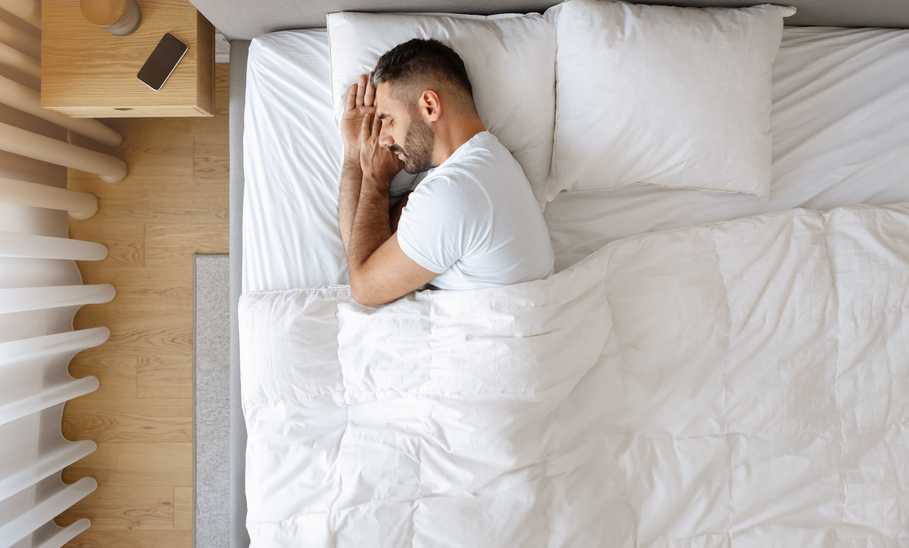How to Make a Mattress More Comfortable

Our evaluations and opinions are not influenced by our advertising relationships, but we may earn a commission from our partners’ links. This content is created by TIME Stamped, under TIME’s direction and produced in accordance with TIME’s editorial guidelines and overseen by TIME’s editorial staff. Learn more about it.
If you toss and turn at night, you may think you need a new mattress. But before you splurge on one, consider these steps to make your mattress and bedding more comfortable and conducive to good sleep.
A mattress topper can instantly upgrade your mattress because it can impact your bed’s comfort level by adjusting the level of firmness, breathability, and softness. The right topper can help you find relief if you struggle with back pain while sleeping, or help your body cool down. A high-quality mattress topper shouldn’t replace a sagging mattress but can help you get more longevity from an older one. You can purchase ones made out of latex, wool, memory foam, and feather down, depending on your preference.
A new set of bedsheets is always an instant upgrade for style and comfort — so it’s an easy way to add to your sleep experience. The quality of a sheet is in its material (cotton, percale, flannel, and bamboo are some popular ones), weave, and thread count. Choose your new sheets based on what you prefer — some sheets are marketed as cooling, made from fibers that help keep your body temperature cooler at night. Also, consider buying new pillows every two years or so to keep them in the best shape for maximum comfort.
It’s recommended that you wash your sheets and pillowcases once a week to remove sweat, stains, dirt, and dust mites that can cause allergies. If you keep them on your bed too long without laundering them, your sleep may be impacted.
According to The Better Sleep Council experts, keep your room dark with proper blinds and window treatments. Don’t sleep with the lights on, which can disturb your sleep.
The best temperature for sleep is somewhere between 65 and 67 degrees Fahrenheit. While some may prefer their bedroom warmer and others colder, sleep experts say this is the ideal temperature range.
Avoid electronics before sleep, which can reduce melatonin levels before bedtime. In addition, don’t leave laptops, iPads, and phones within reach or sight in your bedroom. The blue light released from these devices (and others like it) has also been found to disturb sleep.
Developing a regular bedtime routine can help you settle down for the night. Avoiding screens at least two hours before sleep, gentle yoga, a cup of herbal tea, or a warm (not hot) bath or shower are all ways to relax your body for the night. Going to bed at roughly the same time every evening is also recommended.
Sleeping on the right mattress for your personal sleep style will likely enhance your sleep quality. There are a few factors to consider when shopping for one.
According to research documented in the journal Nature and Science of Sleep, most individuals sleep on their side (54%), followed by their back (38%) or stomach (7%). You can purchase a mattress specifically designed for your preferred sleeping position, so it’s worth investigating the best fit for your sleep style.
Heavier body types may find a mattress designed to comfortably hold more weight will provide the right support for good sleep. There are mattresses for heavy people on the market designed to accommodate up to 250 pounds, and in some cases more. They are durable, non-sagging, and firm enough to feel good under a larger body.
How a mattress is made will determine its firmness, and some mattresses are sold at various firmness levels. Firmness is a big deal. Choosing something too soft or too hard will impact the quality of sleep and your physical well-being. Foam is usually soft with more give; latex and innerspring mattresses are usually medium to firm. A hybrid mattress may have adjustable firmness settings and is made from two types of materials: innerspring coils and memory foam, a gel outer layer, or latex. Many sleep experts and orthopedists recommend trying a medium-firm mattress if you suffer from bad back pain.
Some sleepers run hot, others cold, and your body temperature can impact your rest. In addition, if you’re in perimenopause or menopause, you may struggle with night sweats, prompting the need for a cooler bed. In these cases, your mattress choice may impact your quality of sleep. A high-quality cooling mattress with a breathable and cooling interior for maximum comfort and air circulation can help absorb your body heat to lower your temperature.
If you tend to be cold at night, you may prefer a mattress made of memory foam that will trap and retain heat. Overall, your mattress and your sleep temperature should be in harmony to ensure you get the sleep your body needs to stay well-rested throughout the night.
The information presented here is created by TIME Stamped and overseen by TIME editorial staff. To learn more, see our About Us page.



